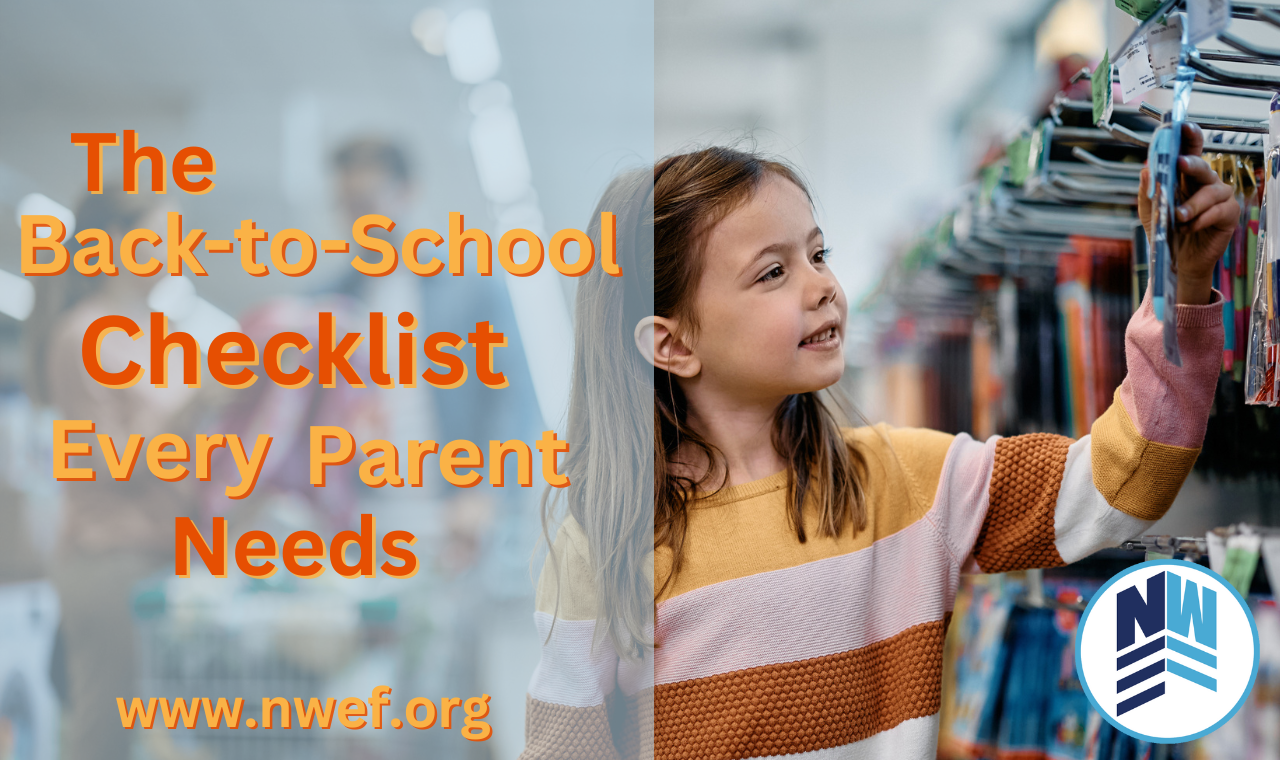
A Back-to-School Checklist That Every Parent Needs
Back-to-school season is an exciting time, but it can also feel overwhelming.
Collecting school supplies, filling out enrollment forms, teacher communications, and preparing for changing routines…Whew! It’s an overwhelming few weeks!
Whether you’re a seasoned parent or sending your first child off to school, it’s so easy to miss important details. But having a clear plan can make all the difference.
This back to school checklist outlines what you need to know and do to help you feel like a super parent, sending your child(ren) off with a sense of stability and purpose.
1. Confirm School Enrollment and Calendar Details
Start by checking that your child is properly enrolled, especially if you’ve moved, changed districts, or are considering homeschooling or private school options. Visit your local public school district’s website or call the school office to verify enrollment and get any last-minute paperwork submitted.
Most schools post important calendar dates—including the first day of school, early dismissal days, parent-teacher conferences, and holiday breaks—on their websites. If you’re not sure where to start, use the GreatSchools directory to locate your district and its website.
2. Connect with Teachers and School Staff
Teachers are your child’s most direct academic support at school. Many schools will assign teachers and classroom rosters one to two weeks before classes begin. You can typically find this information through your district’s parent portal, such as PowerSchool or Skyward.
Don’t wait until parent night to make contact. A brief email introducing yourself and asking how you can best support your child can go a long way. Ask how they prefer to communicate, and see if there’s anything you should know before parent night. Just make yourself available, and indicate that you’re involved and supportive. If the teacher has a classroom website or newsletter, subscribe early to stay informed.
Tip: Some teachers publish supply lists, syllabi, or recommendations online before school starts. Check your school’s website or the TeacherLists directory, which allows parents to search by school to find official supply lists.
3. Stay Informed on Local Education Policies
One of the most overlooked aspects of school prep is understanding your local education landscape. What curriculum is shaping your child? What are the graduation requirements in your state? Are there school choice or scholarship programs available? Involving yourself in your child’s education is incredibly important and affects your child’s academic success!
For these answers and more, parents should explore our Know Your State tool. This interactive map breaks down essential education information by state, including academic standards, parent rights, school choice laws, testing requirements, and contact info for your state board of education.
The map is consistently updated, keeping parents informed about changes in policy and resources.
Know Your State is especially useful if you’re:
- New to the state or considering a move
- Exploring alternative education paths (like microschools, pods, or homeschooling)
- Concerned about curriculum content or school accountability
Understanding the laws in your state helps you become a more confident advocate for your child’s education.
4. Check Transportation, Lunch Accounts, and Health Forms
School isn’t just about books and backpacks—logistics matter too. Here’s a quick glance at some often-forgotten items:
- Bus Routes: Most districts post bus schedules online. If your child is new to riding the bus, call transportation services to confirm pickup times and locations.
- Lunch Accounts: Sign up or refill funds through your district’s online meal service portal. Many use systems like MySchoolBucks to manage lunch accounts and menus.
- Medical Requirements: Be sure your child’s vaccinations are up to date (or file for an exemption), and turn in any required health forms, especially for sports or medications. Every state has its own requirements; check with your pediatrician or your state health department for guidelines.
5. Plan for Routines and Screen Time
Start adjusting your child’s sleep and screen time routines 1–2 weeks before school starts. According to the American Academy of Pediatrics, school-age children need 9–12 hours of sleep per night, and teens need 8–10 hours.
Ease off summer habits gradually:
- Set consistent wake-up and bedtime routines
- Limit screen time before bed
- Reintroduce reading or study habits into daily activities
6. Label Everything and Prep Supplies
You’ve probably already seen supply lists floating around. Once you have them:
- Label everything, especially for younger students: lunchboxes, water bottles, backpacks, jackets, and even individual items like crayons or scissors.
However, this suggestion comes with a caveat. Over the last decade or so, experts have begun to point out the dangers of labeling your child’s school supplies, such as backpacks and lunchboxes.
While most schools do require labels, there are options for doing so safely.
“Only label books, backpacks and lunches with your child’s full name and any other information on the inside,” the New York Department of State suggests, along with a list of other helpful options. “Using initials on the outside is okay, but names, even just first names, on the outside can create an unsafe situation for your child.”
(On the same note, you may reconsider posting those “back to school” photos, or at least consider some safety measures first.)
- Set up a dedicated homework or study area at home to encourage good habits early.
- Keep a few backup supplies (notebooks, pencils, glue sticks) in a drawer so you’re not scrambling mid-year.
7. Don’t Forget the Emotional Prep
School transitions can be challenging, especially for younger kids or those starting a new grade level. Discuss expectations, address concerns, and frame school as an opportunity for growth.
Consider using a visual calendar or countdown to help younger children adjust. For older kids, a conversation about long-term goals, friends, academic opportunities, and time management can go a long way in reducing stress.
The More You Know, The Better You Prep
Every school is different, and every child is unique. But being informed, organized, and proactive can help parents feel confident and help kids feel ready to tackle a new school year.
Whether you’re sending your child to kindergarten, middle school, or high school, preparation isn’t just about pencils and paper—it’s about building a foundation for success.




